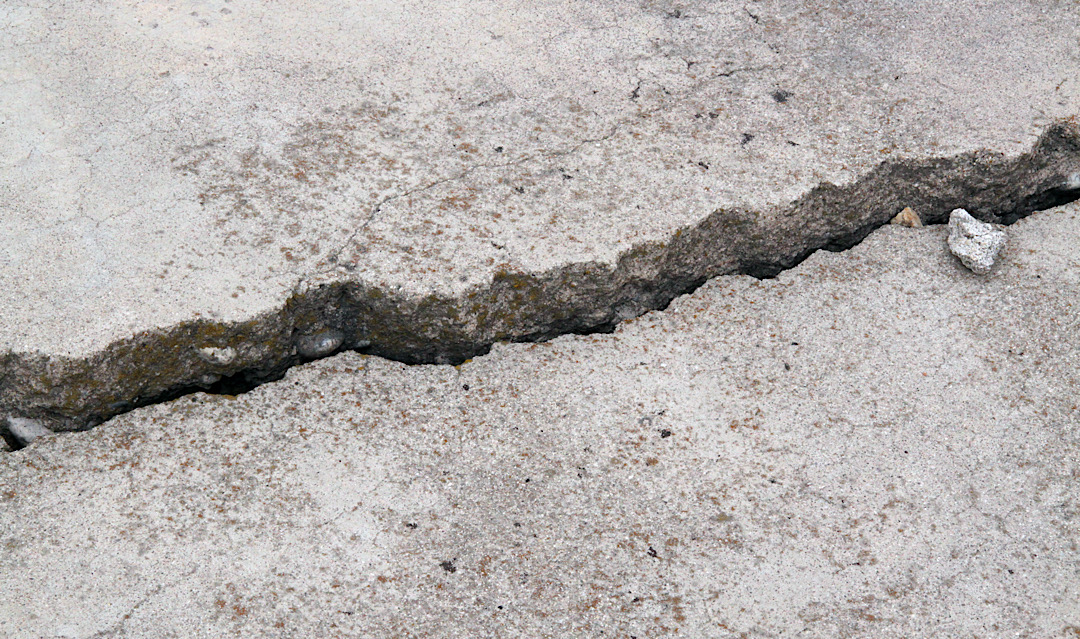
Concrete is a durable and versatile building material, but it is not immune to cracking. Understanding the types of concrete cracks, their causes, and effective repair methods is crucial for maintaining the structural integrity and appearance of concrete surfaces. This guide provides a comprehensive overview of common concrete cracks, their underlying causes, and practical repair methods to address them.
Types of Concrete Cracks
Concrete cracks can manifest in various forms, each indicating different underlying issues. The most common types include hairline cracks, shrinkage cracks, settlement cracks, structural cracks, thermal cracks, and expansion cracks.
Hairline Cracks are very fine and often appear shortly after the concrete has cured. They are typically superficial and do not compromise the structural integrity of the concrete.
Shrinkage Cracks occur as concrete dries and shrinks. These cracks are usually shallow and often appear in random patterns. They are more common in large slabs and areas with insufficient control joints.
Settlement Cracks form when the ground beneath the concrete slab settles unevenly, causing the concrete to sink or shift. These cracks can be more serious and may affect the structural stability of the slab.
Structural Cracks are caused by excessive loads or stresses on the concrete. They are typically wider and may run vertically or horizontally. Structural cracks can compromise the integrity of the structure and require immediate attention.
Thermal Cracks occur due to temperature fluctuations that cause the concrete to expand and contract. These cracks can be exacerbated in regions with significant temperature variations.
Expansion Cracks happen when the concrete expands due to heat and has no space to accommodate the expansion. These are often seen where two concrete slabs meet or where the slab meets a fixed structure.
Causes of Concrete Cracks
Understanding the causes of concrete cracks is essential for prevention and effective repair. The primary causes include drying shrinkage, thermal expansion and contraction, overloading, soil settlement, and improper installation.
Drying Shrinkage occurs as concrete loses moisture and shrinks. If the shrinkage is not evenly distributed, it can lead to cracks. Proper curing and the use of shrinkage-reducing admixtures can help mitigate this issue.
Thermal Expansion and Contraction happens when concrete expands when heated and contracts when cooled. Without adequate expansion joints, these movements can cause cracking. Proper joint placement and the use of materials that accommodate thermal movements are critical.
Overloading refers to excessive loads or impacts that exceed the tensile strength of concrete, leading to structural cracks. Ensuring that the concrete mix is designed for the expected load and reinforcing the structure can prevent such cracks.
Soil Settlement involves the uneven settling of soil beneath a concrete slab, which can create voids and cause the slab to crack as it settles into these voids. Proper site preparation and soil compaction are essential to prevent settlement cracks.
Improper Installation includes poor construction practices such as inadequate mixing, placing, and finishing of concrete, which can introduce weaknesses that lead to cracking. Adhering to best practices and standards during construction is vital.
Repair Methods for Concrete Cracks
Repairing concrete cracks effectively requires selecting the appropriate method based on the type and severity of the crack. Common repair methods include epoxy injection, polyurethane foam injection, routing and sealing, stitching, concrete overlay, and crack bridging.
Epoxy Injection is used to repair structural cracks by injecting a two-part epoxy into the crack, which bonds it and restores the structural integrity of the concrete. This method is suitable for narrow, non-moving cracks.
Polyurethane Foam Injection is used for sealing cracks that are subject to moisture and movement. The foam expands within the crack, sealing it and preventing water infiltration. This method is ideal for dynamic cracks that need flexibility.
Routing and Sealing involves enlarging the crack with a saw or router and then filling it with a flexible sealant. This method is commonly used for non-structural cracks in pavements, driveways, and slabs, providing a long-lasting repair that can accommodate slight movements.
Stitching is used to repair large or structural cracks by drilling holes on both sides of the crack and inserting metal staples or stitching dogs across the crack. The staples are then anchored with epoxy to provide additional strength and stability.
Concrete Overlay involves applying a new layer of concrete over the existing surface to repair extensive surface cracking and improve the appearance of the concrete. It also adds an extra layer of protection and durability.
Crack Bridging involves applying a flexible membrane over the crack to prevent water infiltration and protect the concrete surface. This method is suitable for surface cracks and areas prone to moisture exposure.
Preventing Concrete Cracks
Prevention is always better than cure. Here are some strategies to minimize the risk of concrete cracks:
Proper Curing is critical for concrete to achieve its intended strength and durability. Keeping the concrete moist and at an appropriate temperature during the curing process can reduce the likelihood of shrinkage cracks.
Adequate Reinforcement using steel reinforcement bars (rebar) or wire mesh in concrete slabs can help distribute loads and stresses more evenly, reducing the risk of structural cracks.
Control Joints in concrete slabs allow for controlled cracking at predetermined locations, helping manage shrinkage and thermal movement to prevent random cracking.
Quality Materials and proper mix design ensure that the concrete has adequate strength and durability. Avoiding excessive water in the mix can also reduce shrinkage.
Soil Preparation is essential to prevent settlement issues that lead to cracking. Properly preparing the soil and ensuring adequate compaction can provide a solid foundation for the concrete.
Addressing common concrete cracks involves understanding their types, causes, and the most effective repair methods. By identifying cracks early and employing appropriate repair techniques, you can maintain the structural integrity and appearance of your concrete surfaces. Additionally, implementing preventive measures during construction can significantly reduce the likelihood of cracks, ensuring the longevity and durability of your concrete structures.